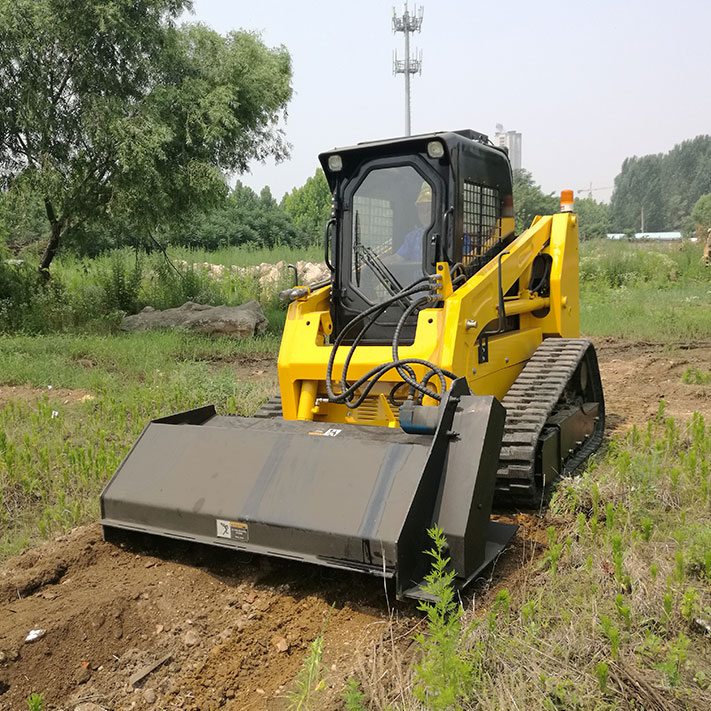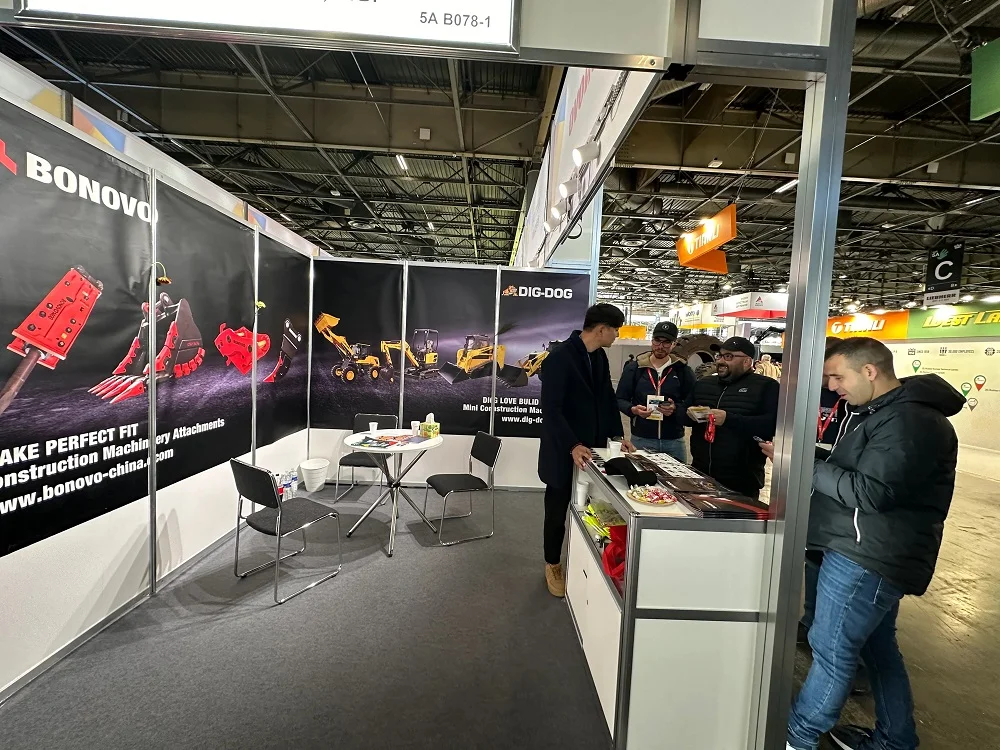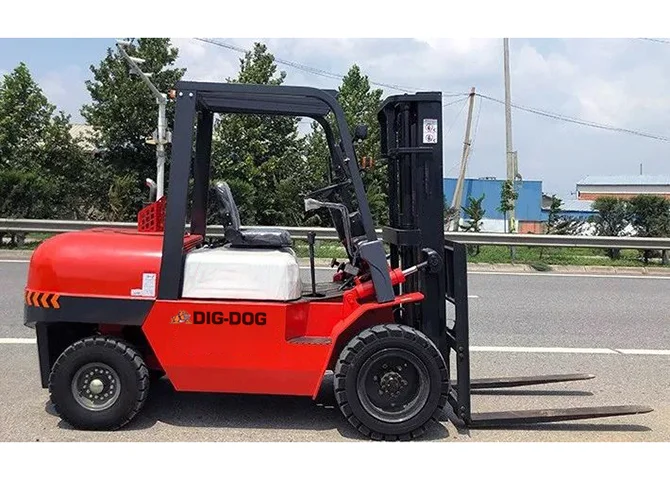Better is relative – first, we need more information
When it comes to clearing areas of land and working on construction project sites, you’ll inevitably face the choice of what type of compact construction to use. In order to save time, money, and be as efficient as possible, you’ll need to learn about your primary options as you research and decide to try them out for yourself. This choice becomes even more crucial if you’re planning to purchase one for the long term. Two construction that always comes up in this selection process mini excavators and skid steers. Many wonder which is better. However, both are equally great at their respective purposes with their own set of pros and cons. Therefore, being better depends on multiple factors.

Before going into the details about each of the two construction there are two key questions you need to answer. First of all, are you purchasing this as a homeowner or a business owner? Secondly, will your work take place primarily on commercial properties or residential properties? The key factor to keep in mind is that with residential work and as a homeowner, you’ll want smaller and more cost-effective construction equipment.
You might need versatility or you might be able to work with a that only gets a specific type of job done. Generally, commercial work takes place on large sites and requires more options for these environments. The same would be true if your commercial property is relatively small. In contrast, if you’re a contractor, you’ll need to be able to handle your area of work whether it’s commercial, residential, or both. Knowing these aspects of use is what will ultimately determine which compact construction is right for you and your work. In most cases, having both a skid steer and a mini excavator is the best choice. Each of these two has its strengths, weaknesses, and primary purposes. Let’s further examine the types of work that each one is best at and why.
We always emphasize the type of work you need to do because that is the most important factor of all. One of the reasons this is so crucial is because the type of work you need to do correlates to the tracks or wheels. So let’s first look at the differences between wheels and rubber tracks since most compact construction you this choice.

Rubber tracks are generally the more popular choice for mini excavators and other construction equipment operations. Instead of steel, rubber tracks minimize damage to the ground surfaces they’re used upon, which reduces ground disturbance overall. They are also lighter weight which makes them easier to use over wet, muddy, and sandy surfaces. Finally, rubber tracks provide a much smoother ride, reducing unwanted and excessive vibrations and noise.
There are many different types of rubber tracks so you’ll need to do some research in regard to their quality and pricing. Quality comes from their manufacturing processes and design elements. Always look for the highest standards, quality control, and real-world reviews. And before moving on, we’ll share with you the basics of what makes up a rubber track and the differences between a true track undercarriage versus tracks that are installed over wheels.
The highest grade rubber tracks are composed of both natural and synthetic rubber compounds blended together. This combination allows the rubber carcass to be both extremely durable and more resistant to cuts and damage. It also allows for the rubber to attain anti-chunking capabilities and resiliency. This means that it’s far less likely for chunks of rubber to break off during use. Therefore, rubber tracks are more than capable of being used for the most demanding types of construction work involving earthmoving and other various applications. Depending on your application, you can select the best tread type for your work.
Finally, rubber tracks contain a continuous steel belt constructed from high-tensile steel for ultimate strength and reinforcement over all terrains. This is better than having an overlapping steel belt because no weak spots will be exposed along the belt that might lead to premature breakage of the cord. A rubber adhesive is used to treat and bond the rubber to the steel. These steel imbeds are carbon forged after being heat treated. This special and intricate process ensures that the drive sprockets properly engage the track system and fit into place perfectly. And having a wheel guide projection will prevent the tracks from slipping off during extremely sleep slopes or harsh sharp turns.
For this last section about wheels and tracks, we’ll briefly go over the other options. Aside from undercarriage tracks, construction can also come equipped with wheels and/or over-the-tire tracks. Just like any other standard vehicle, wheels offer more maneuverability. But in the case of construction specialized heavy-duty wheels and tires must be used. By using wheels, you have the option to install an over- the-tire track system. This gives you added flexibility. We’ll go more into detail about that in just a bit. However, now is the time to take a closer look at mini excavators.

Mini excavators are tracked or wheeled compact construction used for many onsite purposes.
The general cut-off for this type of classification is 20,000 pounds, but sometimes 10,000 pounds is considered the limit. On average, they come equipped with 25 to 35 horsepower (HP) engines. Having a boom, or angled mechanical arm is the stand-out feature of a mini excavator. A bucket or attachment is installed at the end of the boom depending on the application it's being used for. The base of the boom attaches to the cab the which swivels on parallel tracks or wheels. This gives a 360-degree operation without maneuvering the entire machine. With this setup, most excavators are used for digging, trenching, dumping, and mulching. Their main advantage is their power to size ratio which allows for big jobs

For the last part of the mini excavator section, let’s take a quick look at the differences between a mini-excavator and a full-sized standard excavator. The first obvious difference is the overall smaller size of the compact mini excavator. From underneath, the undercarriage of the mini excavator will also be narrower and further compacted to help get through doors and other tight spaces. This translates to less weight as well.
Being less weight and smaller has its advantages. For example, transporting a mini excavator is much easier and efficient. During use, you won’t have to spend as much on fuel. Also, maintenance is cheaper due to the reduced cost of smaller parts. Overall, the cost of a mini excavator is reduced. When controlling a mini excavator, the machine has reduced tail-swing, possibly even zero tail-swing. This definitely helps with operation, maneuvering, and getting around cramped and narrow sites like parking lots.
Standard-sized excavators, also known as crawlers, are the most popular size choice for commercial construction applications. They are often too large for residential and small construction sites, however. In this class, they weigh between 10-45 tons. Their hydraulic system offers much more increased power and attachment options over their mini counterpart. Their increased size also allows for a more extended reach with their boom.
Knowing the differences between a standard excavator and a mini excavator, here are examples of the primary usages of a mini excavator:

Now that you understand what classifies a mini excavator, let’s take a look at the skid steer aka skid loader. This compact construction is a versatile, all-around machine used for digging, pushing, pulling, and lifting. Due to its ability to use thousands of different attachments on its arms, it generally gets the nickname of "Swiss Army Knife" for its size and agility. This is also because it’s lightweight and maneuverable. During operation, the driver can control each side of the wheels’ speed separately. By speeding up the wheels on the side they wish to turn and slowing the wheels on the opposite side, they are able to make skid and drag turns. This is their hallmark zero-radius turn. In other words, the skid steer doesn’t have to move forward or backward when turning.
The best way to think of a skid steer is as a power tool head with multiple attachments. On average, they come equipped with 50 to 70 horsepower (HP) engines. As you might now realize, the qualities give it its very own distinct advantages. They also provide lower ground pressure and produce less noise than most other construction.
Furthermore, they are capable of traveling at faster speeds. The other big stand-out feature of a skid steer is the fact that the booms and buckets face away from the driver allowing them to reach over the cab instead of around it. This reduces the size of the skid steer considerably.

One last aspect of the skid steer we need to revisit is the option of having wheels or tracks. As previously mentioned, having wheels allows for the maximum amount of maneuverability. For most applications, this is good enough. However, wheels and tires alone might not be able to handle all types of terrain and environmental conditions. In these cases, tracks are necessary in order to maintain safety, control, and traction in these more difficult circumstances. Therefore, if your environment has standard ground types such as asphalt and concrete, wheels should be all you need. But if you find yourself in dirt, mud, gravel, snow, wet conditions, and other complicated terrain, tracks might be the better choice for you.
And if you find yourself in a mix of different types of scenarios, there are also over-the-wheels tracks options. This is a huge bonus for skid steers especially. Skid steers excel at being all-around useful machines, and having the option for over-the-wheel tracks furthers their versatility. Most over-the-wheels tracks can be set up within an hour, so you’ll always be able to make time to customize your skid steer for the terrain you’ll be working in.
As you’ve probably figured out by now, skid steers are excellent jack-of-all-trades construction of different attachments:

Now that we’ve examined mini excavators, large excavators, and skid steers in-depth, let’s delve into one more comparison before wrapping everything up. Knowing the differences between small skid steers, medium backhoes, and large wheel loaders will make sure you’re well informed. Backhoes have been a go-to choice for many contractors for years. So much so in fact that most contractors would use a backhoe if they could choose only one construction to work with.
A backhoe—which is also known as a rear or back actor—consists of a digging bucket attached to the end of a two-part articulated mechanical arm. This mechanical arm is then mounted on the back of a tractor or a front loader. Where the backhoe excels in is speed and power. It’s capable of performing deeper digs at a time, as far as 12 to 14 feet, and it can move materials much faster. Having this option makes a backhoe a tremendous workhorse, but it can be large and cumbersome. Getting into position, finding a place to set the loader bucket and putting the stabilizers down is also time-consuming, especially if there’s gravel, lumber or other materials in the area. Therefore, it can prove to be difficult to use them in small construction sites like residential areas when compared to a skid steer. Finally, you can only really use half of a backhoe’s potential at a time. Realistically, when you’re operating one part of one half of it, the other half is not being used. So in the case of efficiency, having two compact machines working simultaneously is more efficient in these cases.
One other important to consider is a wheel loader. These also come in various sizes, but its main distinctions are its tractor-like operator cab, four heavy-duty wheels and tires, and a bucket loader at the front. Their main advantages are being 4 wheel drive which is easier on tires, easier on turf and other surfaces, and better at being fuel-efficient. They also generally have longer wheelbases which equate to nicer ride quality. In terms of ground speed, this puts them in a faster class of construction
From the way they’re built, they have more ground clearance than most other construction with greater lift capacities and higher lifting ability. Since they are much taller than most construction machines, this could be a con as well as a pro. But when compared to skid steers, wheel loaders don’t have the variety of accessories that skid steers do, nor do they have the hydraulic power.

As we draw close to the conclusion, it should now be clearer for you to understand the differences between skid steers and mini excavators. Skid steers are more versatile due to their nearly limitless available attachments. They provide a zero-turn radius for added maneuverability and are compact and more compact and lightweight making them easier to transport, manage, and lower cost overall. Skid steers are perfect for small construction lift and carry. They also excel at residential construction jobs especially for concrete work, retaining work, pavers, etc. Mini excavators are versatile but are much better at what their name specifies—excavating. You can dig larger holes faster. They are also great at making trenches. Overall, if your job is bigger dealing with demolition and large areas of landscaping, the mini excavator will truly shine.

The bottom line is that if you can only have one of these two construction machines, it will all boil down to the type of work you need to do.
From a general standpoint, you’d want to use skid steers in residential environments and small-scale construction projects. This is mainly due to their lighter weight which reduces the risk of damage to the area. Also, skid steers will be easier to maneuver, operate, and drive around the worksite. Their attachments also make them easier to use for jobs that require material to be stacked up or spread out, and especially tricky cornering and turns.
However, if excavation is the biggest priority, then a mini excavator would be your choice. Mini excavators come with a higher price point and maintenance upkeep, but it is your best bet to dig deeper down into the ground. It’s also a champ if you need more reach and needs to move things in extended heights and lengths.

Ultimately, it’s all comes down to selecting the best construction machine for your work application. If you can’t own both, the choice between the skid steer and mini excavator will be based on your personal use. This may be common sense, but it’s important to understand the details about each construction machine. But you have a clearer understanding of each strength, weaknesses, and primary function. And if you’re starting to build a construction fleet for your commercial business, then you’ll probably need both of these machines in your repertoire. As you research, use, and learn more about each of these construction machines, you’ll be able to fully utilize them to their maximum capabilities. If you’re able, the absolute best thing to do would be to rent each one for a construction project so that you’ll truly understand each machine.
This will also make sure you realize the details of transporting, maintaining, and operating each one in real-world conditions. After all, you’ll need to understand their attachments, wheels, tires, fuel use, storing them, possible repairs, and other nuances.
Finally, the most important thing to remember when operating any construction is that safety always comes first. Be sure to speak to your sales advisor, read the manufacturer’s operating manuals, and understand all safety measures. Now get your construction machines, get out there, and get into the action!
 BONOVO Group at INTERMAT 2024 Paris Exhibiton
BONOVO Group at INTERMAT 2024 Paris Exhibiton
 A Ultimate Guide to Clamp Forklifts and Attachments
A Ultimate Guide to Clamp Forklifts and Attachments
 How To Choose The Right Compact Wheel Loader
How To Choose The Right Compact Wheel Loader
 How Much Does a Forklift Weigh?
How Much Does a Forklift Weigh?